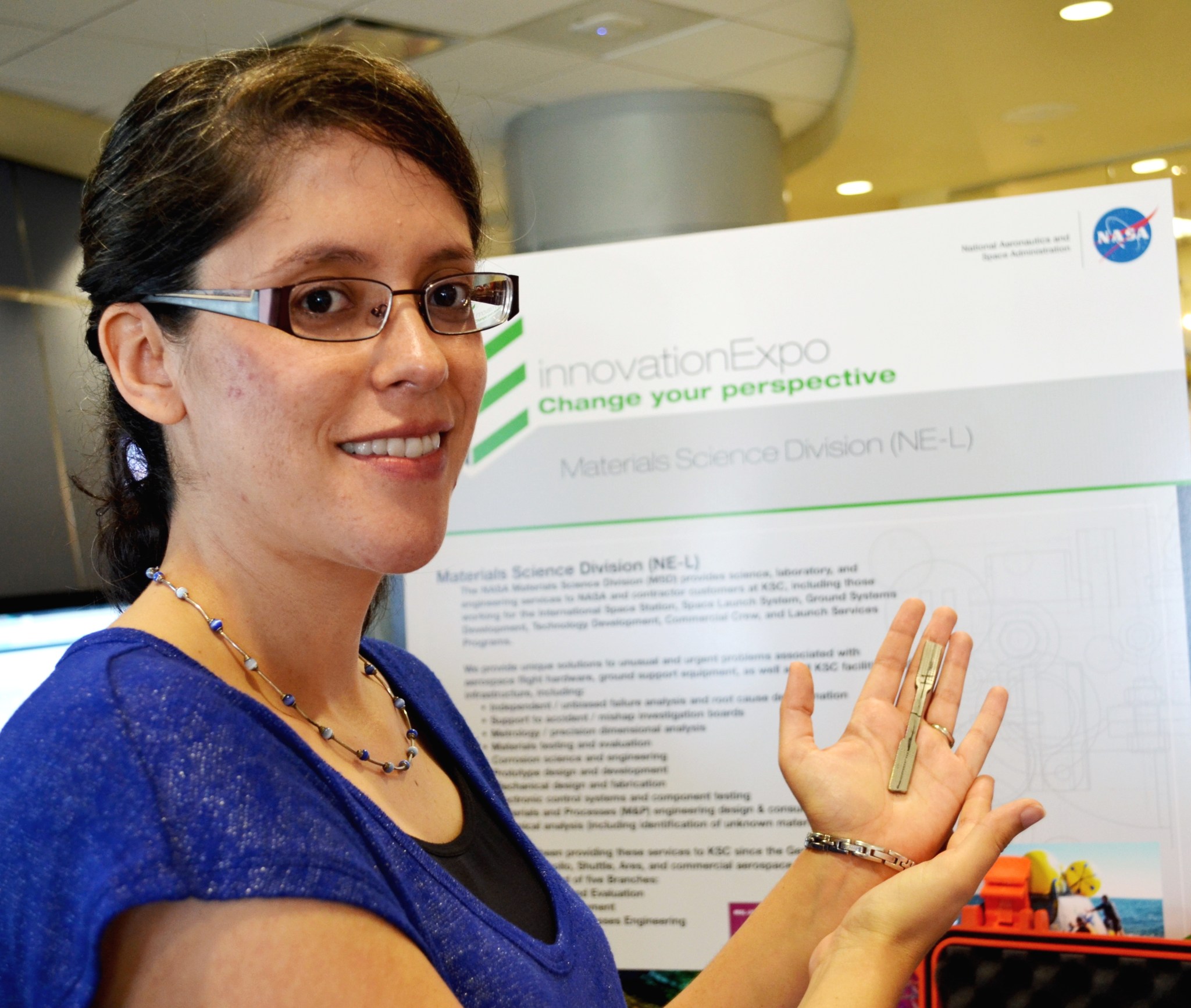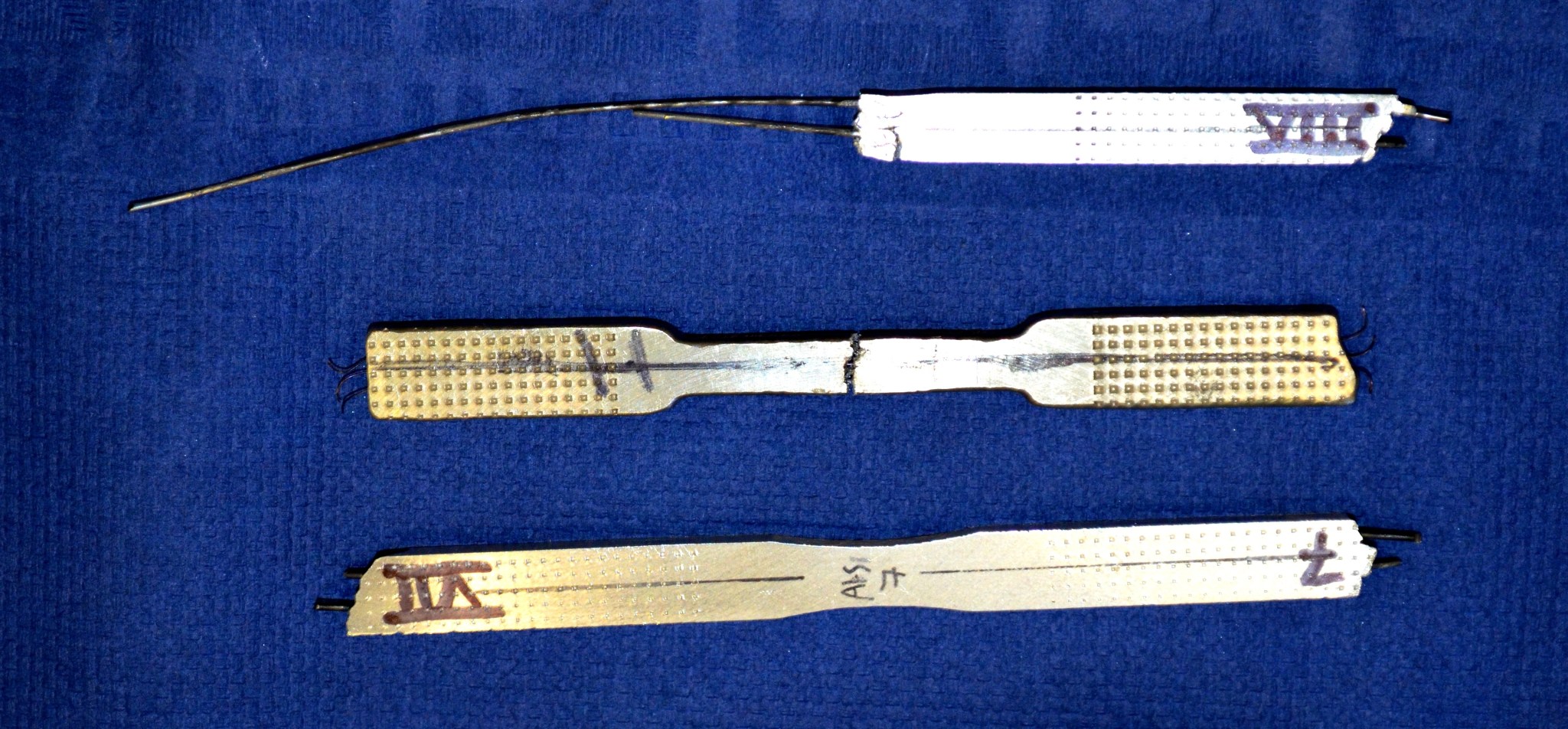A future spacecraft landing on a distant planet may have an improved margin of safety due to innovative metal alloys being developed at NASA’s Kennedy Space Center in Florida. Called “SMASH,” Shape Memory Alloy Self-Healing is a technology that creates metals that, when damaged, can repair themselves.
Aircraft and spacecraft can be subject to material fatigue, the progressive and localized structural damage that occurs when a material is subjected to repetitive stress.

“This technology could be used on deep-space missions to destinations such as Mars or for high-performance aircraft,” said Clara Wright, a materials engineer in NASA’s Engineering and Technology Directorate and the principal investigator for the project.
Earlier this year, the NASA Aeronautics Research Institute (NARI) awarded an 18-month, $275,000 follow-on Phase II seedling funding award to continue research and development of the alloy that can self-repair fatigue damage in metallic structures of aerospace vehicles using liquid-assisted shape memory metals.
NARI is part of the agency’s Aeronautics Research Mission Directorate (ARMD) and was established to invest in innovative, early-stage and potentially revolutionary aviation concepts and technologies.
This is the first time that a Kennedy-led team has been selected for both the Phase I and Phase II seedling award in this type of project. The NARI Seedling Fund provides NASA civil servants the opportunity to perform research, analysis and proof-of-concept development of ideas that have the potential to meet national aeronautics needs.
Phase I of the project began in June of last year, as part of a collaborative research effort with Michele Manuel, Ph. D., professor of Materials Science and Engineering at the University of Florida.
“We have been working with Dr. Manuel in applied failure analysis, mentoring and outreach activities for years,” Wright said. “She had a proof-of-concept, non-structural material for self-repairing metal structures and was looking for potential applications. We had the opportunity to further the work and find aeronautical and aerospace applications. That’s how we at Kennedy became involved.”
Wright works in Kennedy’s Materials and Process Engineering Branch and within the failure analysis laboratory where experts determine why structures break down and how to avoid future malfunctions.
“Much of the work is to make sure that when we’re designing hardware, we’re using the right materials for the right applications,” Wright said.
During Phase I, and leveraging a NASA Early Career Faculty Award, the SMASH team developed structural alloys that could self-repair fatigue cracks.
The Phase II SMASH team researchers include Catherine Brinson, Ph. D., professor and chair of Mechanical Engineering at Northwestern University in Illinois, and Terryl Wallace, Ph. D., of Structural Materials Engineering at NASA’s Langley Research Center in Virginia. For Phase II, Northwestern will be using finite element modeling to determine the best alloy reinforcement, while Langley will be supporting fabrication and potential applications for both aeronautical vehicles and spacecraft.
“The alloys being developed are to be used in critical locations where fatigue crack propagation fractures would likely occur,” Wright said. “We’d use them in areas where we can predict stress localization that might cause fatigue on aircraft structural parts, such as where the wings attach to the fuselage or areas that involve repetitive motion such as the landing gear.”
Wright points out that for spacecraft traveling far from Earth, a repair shop would not be an option.
“This is all about finding ways to mitigate potential damage from stress and coming up with a good answer to that problem,” she said. “Once a spacecraft is well beyond Earth, anything we can do to stop crack propagation and prevent a failure will improve our safety margins.”
The SMASH technology begins with adding to metal alloys “shape-memory wire,” similar to that used in dental braces.
“Once shaped, memory wire will want to return to its original form,” said Wright, “so if stress bends a metal component out of its designed shape, it will want to return to its proper form.”
The key to shape memory wire returning to its designed shape is heat.
“In the case of dental braces, the heat in the person’s mouth keeps the braces in the correct shape, pulling the teeth in the desired position,” she said. “For the SMASH aerospace alloys, if a fatigue crack begins, the shape memory alloys reinforcements will stretch across the crack. Heating the wires will pull the metal crack surfaces back together and the elevated temperatures also will cause low melting phase in the alloy to become liquefied to fill in any gaps.”

SMASH technology researchers are now testing three different types of aluminum alloys newly developed at the University of Florida: aluminum-silicon, aluminum-copper, and aluminum with both silicon and copper.
“Much of our testing has focused on which alloy works best,” Wright said. “So far, our research indicates that all the alloys retain about 90 percent of the strength after repair. Our next steps are to determine what an alloy’s fatigue life and reliability is once it has been repaired.”
Wright noted researchers will soon begin developing larger-scale samples, different reinforcement architectures, as well as testing and using non-destructive evaluations to confirm that the concepts work.
“We also want to determine how to best fabricate the metal and then test it,” she said.
Advanced analysis may take place on the International Space Station.
“We want to expose the materials to atomic oxygen and the microgravity environment of both inside and outside of the space station,” Wright said. “We’d probably leave the samples up there for between six months to a year to determine any effects of the space environment on the repair capacity of the alloys.”
Wright explains that putting the technology to work in actual aircraft or spacecraft is still about eight to 10 years away.
“We’ve come a long way in the time since the project began last year,” she said. “We have until February of 2015 to complete the work under phase two (of the NARI award). In the Failure Analysis Lab, we are usually trying to figure out why something failed. The SMASH Project is giving us an opportunity to determine how to prevent failures in the first place.”

























